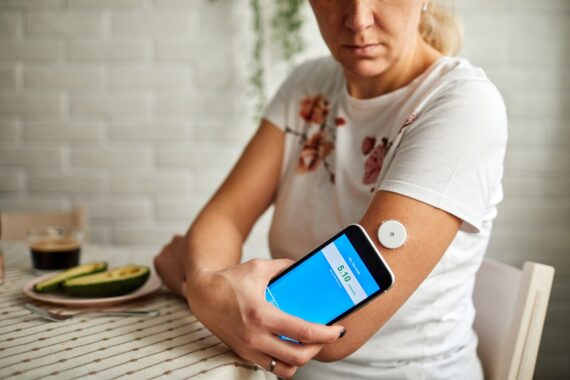NICE has published final guidance recommending the use of ‘game changer’ wearable tech in patients with type 1 diabetes.
Access to the hybrid closed loop systems will happen through a five-year phased roll out on the NHS in England and Wales rather than the three months that is usually given to comply with NICE guidance.
NHS England said it would need time to get the technology in place because people with diabetes would need specialist support to use the technology and because there is currently wide variation in its use across the country.
It would also take time to recruit and train staff to support patients to make use of hybrid closed loop systems and there were also issues of health inequality, including access to smartphones, that would need to be addressed it said.
The phased roll out will initially start with children and young people, patients who are pregnant or planning to become pregnant and adults who already use pumps who want to transition to the closed loop system.
Under NICE recommendations, hybrid closed loop systems are recommended as an option for managing blood glucose levels in type 1 diabetes for adults who have an HbA1c of 58 mmol/mol (7.5%) or more, or have disabling hypoglycaemia, despite making use of real-time or intermittently scanned continuous glucose monitoring.
NHS England is developing a new commercial framework for procurement of the devices to ensure cost effective prices, which is also expected to take some time, according to plans on the NICE website.
The technology is also recommended as an option for managing type 1 diabetes in children and young people.
Patients will only have access to the technology through a trained multidisciplinary team who can support them in its use.,
There are around 270,000 people in England and 16,000 people in Wales living with type 1 diabetes, according to NHS data.
In making the recommendations, the committee said that ‘continuously managing blood glucose levels is a substantial mental burden for people with type 1 diabetes and their families or carers’.
Use of the hybrid closed loop systems means insulin can be delivered automatically using a calculation based on continuous blood glucose measurements reducing the mental burden on the patient or their carer and improving quality of life.
In addition ‘clinical trial and real-world evidence shows that [hybrid closed loop] systems are more effective than standard care at maintaining blood glucose levels within a healthy range,’ the committee added.
It follows guidance last year in which NICE recommended ‘flash’ glucose monitors for all type 1 diabetes patients, with devices prescribed by their GP or local diabetes team.
[box]
1.1 Hybrid closed loop (HCL) systems are recommended as an option for managing blood glucose levels in type 1 diabetes for adults who have an HbA1c of 58 mmol/mol (7.5%) or more, or have disabling hypoglycaemia, despite best possible management with at least 1 of the following:
- continuous subcutaneous insulin infusion (CSII)
- real-time continuous glucose monitoring
- intermittently scanned continuous glucose monitoring.
1.2 HCL systems are recommended as an option for managing blood glucose levels in type 1 diabetes for children and young people.
1.3 HCL systems are recommended as an option for managing blood glucose levels in type 1 diabetes for women, trans men and non-binary people who are pregnant or planning to become pregnant.
1.4 Only use HCL systems with the support of a trained multidisciplinary team experienced in CSII and continuous glucose monitoring in type 1 diabetes.
















